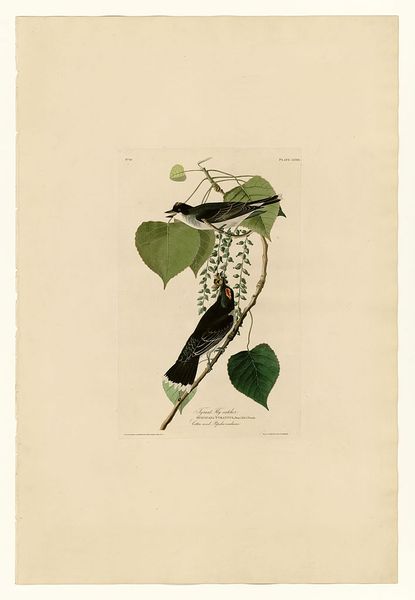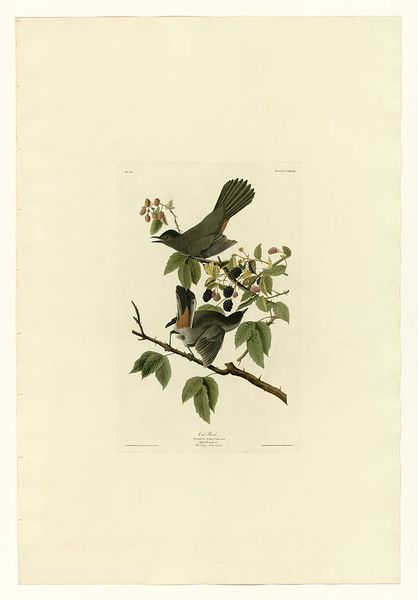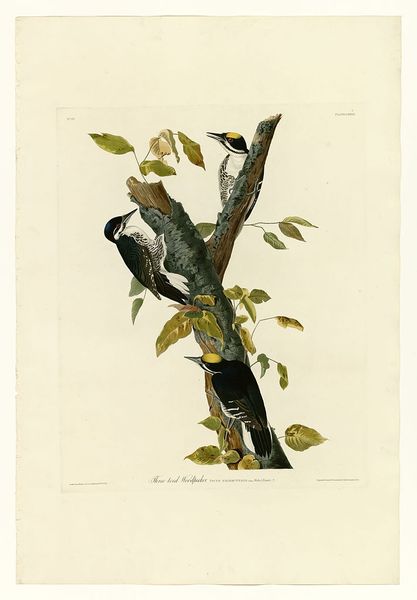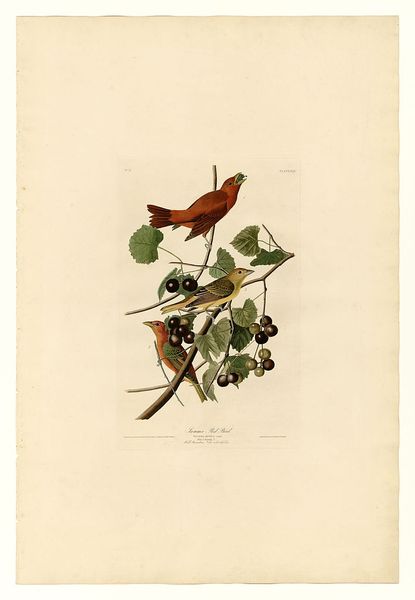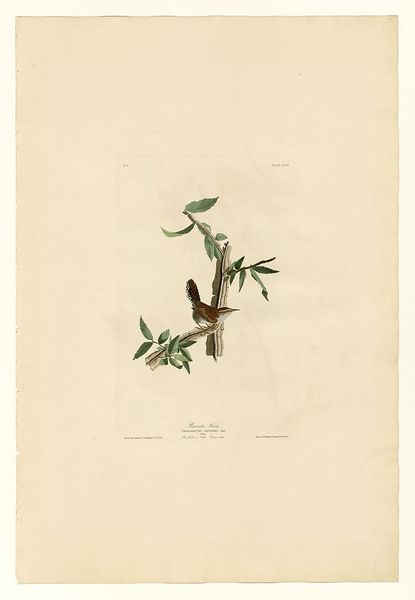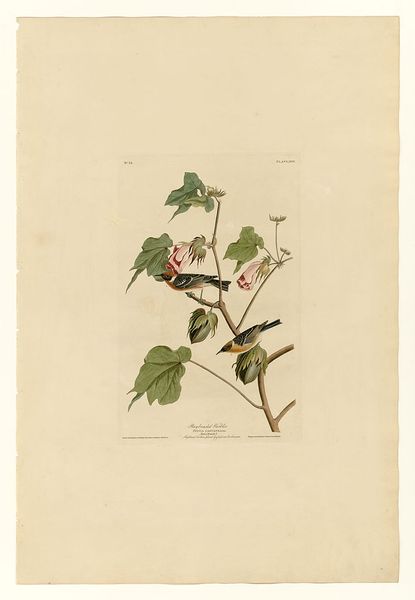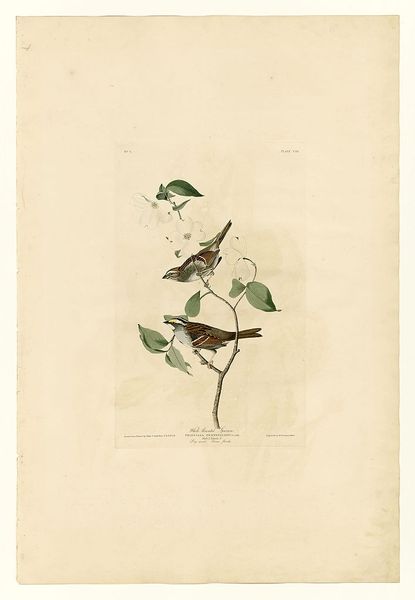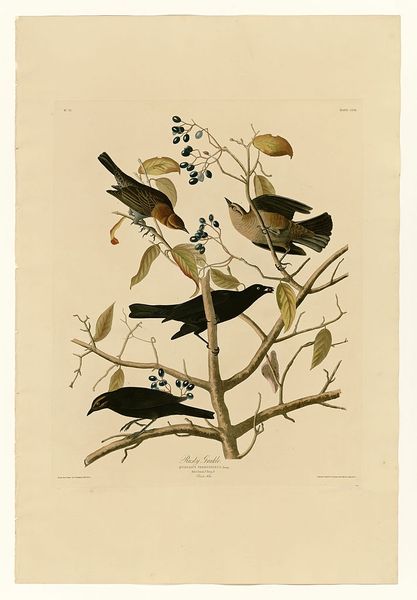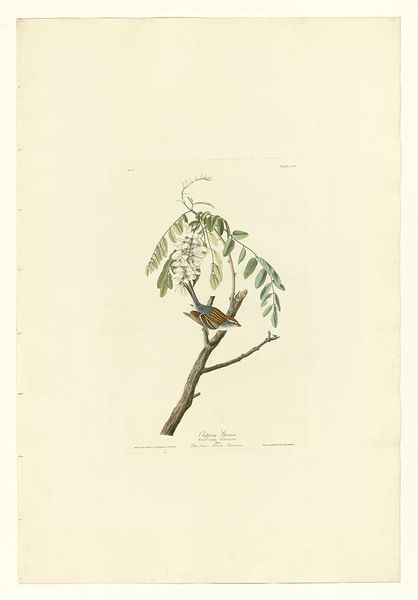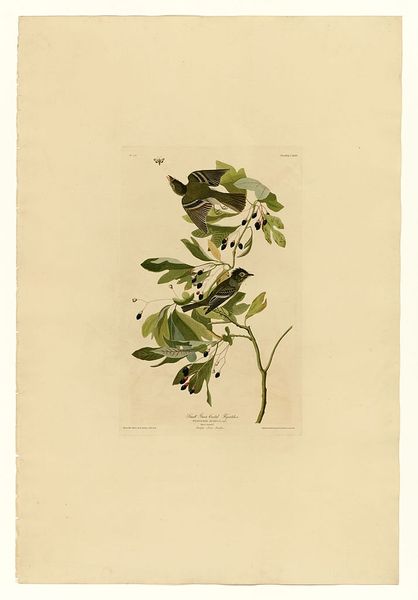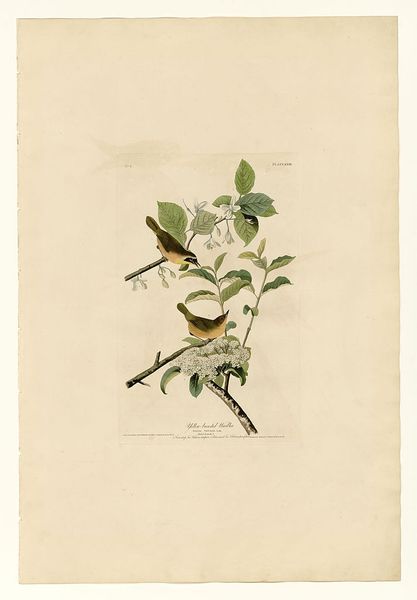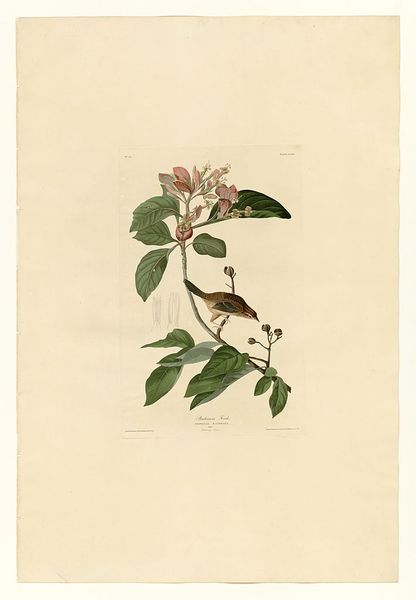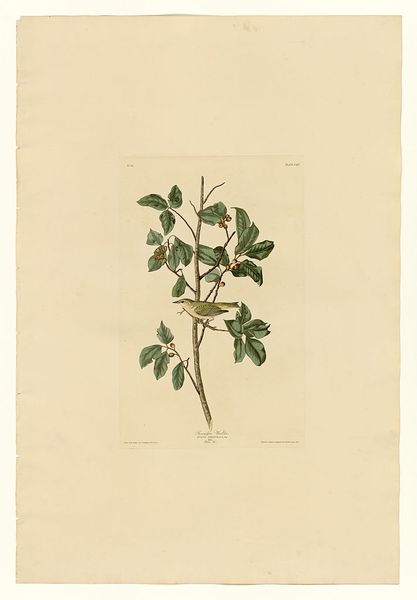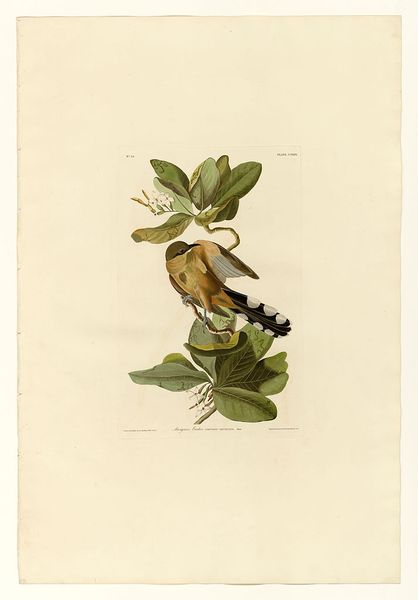
drawing, painting, paper, watercolor, pencil
#
portrait
#
tree
#
drawing
#
painting
#
landscape
#
flower
#
figuration
#
paper
#
watercolor
#
plant
#
romanticism
#
pencil
#
botanical drawing
#
watercolour illustration
#
botany
#
botanical art
Copyright: Public domain
Curator: Immediately, I’m struck by the graphic quality, the boldness of the birds set against the botanical drawing. It feels so meticulously observed, but also…brutal, almost theatrical. Editor: We're looking at Plate 57, titled "Loggerhead Shrike" by John James Audubon. He captures these birds, also known as butcherbirds, in watercolor, pencil, and potentially other media on paper. There’s no precise date associated with the work in our records. Curator: Butcherbirds – an apt name given the impaled mouse held in the grip of one bird, presented so starkly. It certainly shifts the perspective, from idyllic nature scene to something more primal. It feels laden with symbolic tension. Editor: Absolutely. Audubon's images contributed both to scientific knowledge and a specific vision of American wildlife during the early to mid-19th century. The portrayal is carefully constructed to emphasize both beauty and the harsh realities of survival. His works influenced public perception and policy concerning nature and its conservation. Curator: That dead mouse is fascinating from a symbolic point of view, though. Is it a memento mori, or a demonstration of power? Or both? These birds, perched amongst what I believe are Blackberries, their fruit a symbol for prosperity, seems like a contradiction. This blend suggests a cultural fascination with duality, the romantic ideal confronted with the darker undercurrents of nature’s struggles. Editor: The presentation of prey relates directly to how Audubon wanted the animals represented in his studies, and how these images contributed to national self-imaging and shaped a distinctly American understanding of wildlife. There is this tension to highlight aspects that might seem troubling to some people, particularly in genteel society. These elements serve a larger purpose to show "the real". Curator: And, let’s remember, Audubon was selling a product. These meticulously crafted images weren’t just scientific documents. The market drove Audubon to emphasize the spectacular and novel – violence became part of that allure, feeding the contemporary obsession with the sublime aspects of nature. Editor: Yes, and this commercial aspect also means we should think about Audubon’s own role in shaping an emerging national identity that romanticized, classified, and, in many ways, also laid claim to the natural world as property. Curator: It makes one pause and consider the psychological motivations, doesn’t it? He captured the spirit, the emotional truth behind natural existence with disarming accuracy, so the drawing has this unique power over its viewers. Editor: A testament to the layers of context woven into an image like this—natural history, artistry, and even nascent commercial interests all play a role.
Comments
No comments
Be the first to comment and join the conversation on the ultimate creative platform.
